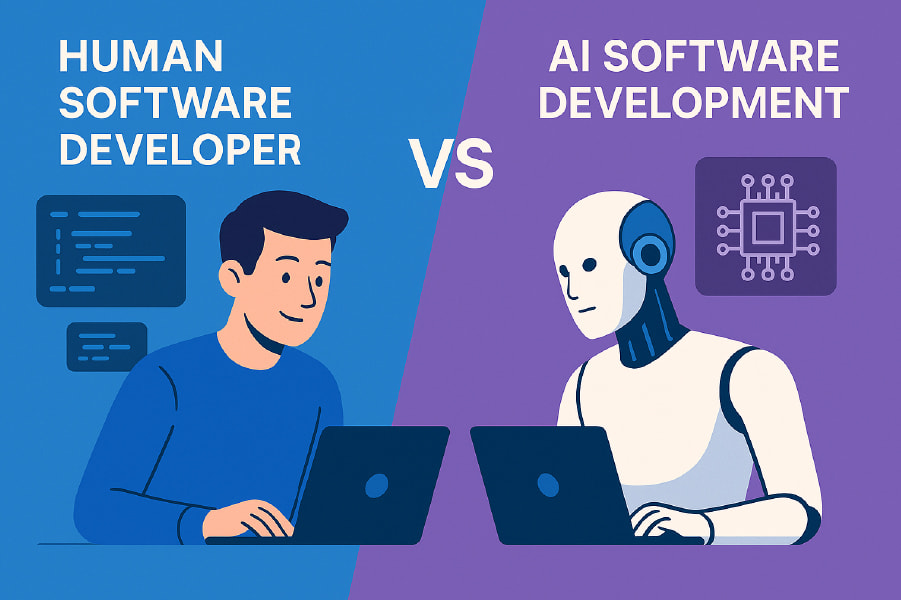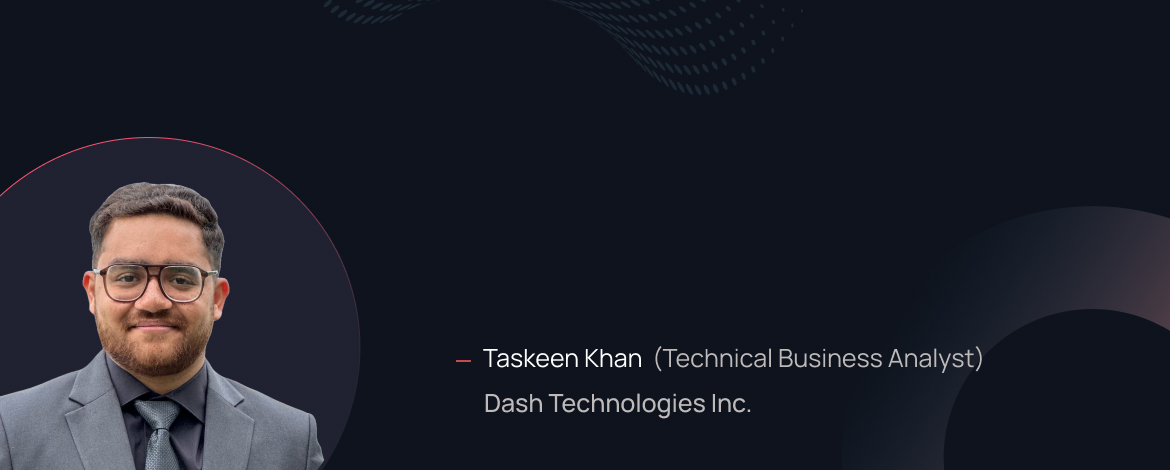AI Software Development vs Human Software Development: The Experiment (Part 1)
Can AI software development tools make developers and the whole development process faster without sacrificing product quality? It’s the million-dollar question that’s been polarizing the tech community. We’ve all heard the hype; AI is the future, AI is hype, AI will replace developers, AI can’t be creative. The noise is endless, but at Dash Technologies, we decided to cut through the chatter and put these claims to the test the impact of AI on software development.
We designed a controlled experiment that would give us real, measurable data. Two developers, one task, two completely different approaches: Traditional manual coding versus AI software development using Cursor, an AI-powered code editor designed with developer context in mind. Why? To once and for all settle the question of whether AI product development actually speeds up the development process without compromising the quality our clients rely on.
The outcome? You might say they were really eye-opening. In this blog, we walk you through the process of our experiment and reveal preliminary results that might surprise you. Stay tuned for Part 2, as we take a deeper look into how AI software development is changing the future of coding; and what it means for your next project.
Setting the Stage: The Setup
Here’s where things start to get interesting. We didn’t just take two of our best devs and throw them into the ring. We carefully vetted and selected two professional software developers who would actually make sense to conduct this test on, which will help reveal to us great insights into AI product development.
Participant Profiles:

Developer A: Traditional Methodology Baseline
- Java expert with 5-6+ years of battle-tested experience
- Senior full-stack developer who’s seen it all
- Proven track record in complex system architecture & implementation
- Approaches coding the old-school way: manual writing, debugging, & testing
Developer B: AI-Assisted Development
- Python specialist with zero Java experience (yes, you read that right!)
- Junior resource with fresh perspectives
- Already familiar with Cursor & AI Code Assistants
- Leveraged AI Code Assistant for code generation, debugging, and optimization
The Task – Real-World Application Build
Now here’s where we put the wheat from the chaff. We didn’t assign our developers some superficial “Hello World” project that you’d see in a coding bootcamp. No. We dropped them in the deep end with a problem that would make even the most experienced developers break a sweat.
The Mission: Build a full-stack note-taking and task management application that could actually compete with real-world products. This wasn’t just about testing AI software development capabilities; this was about seeing if AI in product development could handle the complexity that defines modern software engineering.
The Feature Gauntlet

The developers had to construct a full set of capabilities intended to analyze all aspects of AI product development:
Authentication and Security Framework
- Secure registration and login flows using Spring Security 6
- JWT-based session management (because nobody wants their notes stolen)
- Enterprise-grade security measures suitable for healthcare and MedTech applications requiring data protection compliance
Core Application Features
- Dual note creation capabilities supporting both plain text and interactive checklist formats
- Complete CRUD (Create, Read, Update, Delete) operations with extended character support (65,535 characters per note)
- Advanced note management including search functionality, priority pinning, and deletion protocols
- Dynamic user interface supporting both grid and list view presentations
Backend Architecture
- Java Spring Boot framework (latest stable version) ensuring robust server-side processing
- PostgreSQL database integration for reliable data persistence and scalability
- RESTful API design following industry best practices for AI Product Development workflows
Security Implementation
- Comprehensive middleware filtering for all client-server communications
- Encrypted and digitally signed token management ensuring data integrity
Frontend Development
- ReactJS framework with Material UI component library
- Responsive CSS and HTML implementation ensuring cross-device compatibility
- User experience design principles aligned with modern application standards
Operational Excellence
- MDC (Mapped Diagnostic Context) logging implementation for comprehensive session tracking
- User action auditing and request flow monitoring
- Debugging and maintenance capabilities essential for new product development lifecycle management
This project extended beyond a simple exercise as it served as a miniature product requiring secure user management while scaling frontend UI/UX alongside implementing proper session auditing. This scenario serves as a definitive test of AI software development capability to tackle modern application development complexities.
One developer built it from scratch manually, relying on years of Java expertise and traditional debugging methods. The other used Cursor AI as their coding companion, letting artificial intelligence guide them through unfamiliar Java territory.
The impact of AI on software development was about to be put to the ultimate test.
Next Blog: Who Wins? Who Loses?
Do you find our shared information thus far engaging? Fasten your seatbelts for Part 2 as we reveal the information set to transform your perspective on AI software development!
What’s Waiting for You in Part 2:
- Raw developer feedback that will make you rethink everything about AI Code Assistants
- Side-by-side time comparisons that left our entire team speechless
- Quality analysis that proves (or destroys) every assumption about AI in product development
- The unexpected winner in our coding showdown (hint: it’s not what you think! Or is it?)
- Real performance metrics that separate hype from reality in AI Product Development
Our discussion includes authentic data points and genuine developer feedback, which could transform your approach to new product development.
Key Takeaways & Your Turn to Share
The impact of AI on software development is real, measurable, and more nuanced than anyone expected. Our jaw-dropping findings are on the horizon, but we first want to share your insights! Have you used AI coding tools? Whether you’re a team Cursor, GitHub Copilot loyalist, or ChatGPT experimenter, your stories matter!
We’d love to hear:
- Which AI Code Assistant is your coding companion?
- When you implemented AI software development, did it expedite your workflow, or did you find yourself debugging AI-generated messes?
- Any epic wins or spectacular fails with AI Product Development?
- What’s your biggest fear (or hope) about the future of New Product Development with AI?
Share your experience with us:
- Post on social media using #DashIntoAI and tag @DashTechnologiesInc
- Or email us at sales@dashtechinc.com — the most compelling stories might be featured in our upcoming content!
Don’t miss Part 2; it’s going to be the definitive answer to whether AI can truly revolutionize how we build software.
About Dash

Dash Technologies Inc.
We’re technology experts with a passion for bringing concepts to life. By leveraging a unique, consultative process and an agile development approach, we translate business challenges into technology solutions Get in touch.









